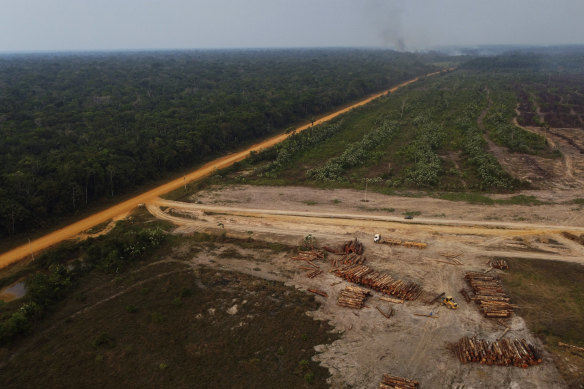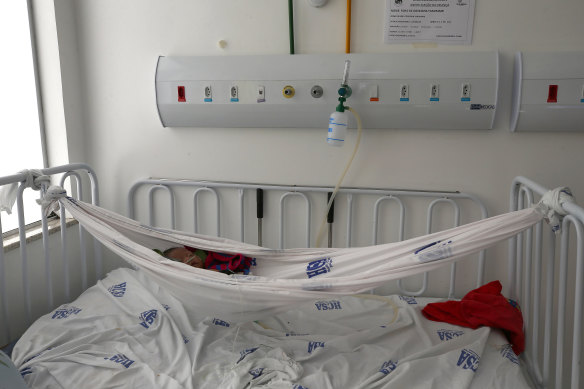The Amazon is deteriorating too fast for species, people and climate to adapt

Two new scientific review articles by international teams of researchers paint a bleak picture of the state of the Amazon rainforest: the critical ecosystem is being damaged at an unprecedented pace, they warn, which may usher in “a qualitatively different global climate regime” with grievous effects on biodiversity and human welfare.
An area of forest burns, top right, near a logging area in the Transamazonica highway region, in the municipality of Humaita, Amazonas state, Brazil.Credit:AP
The papers, both published in the peer-reviewed journal Science on Thursday, summarise research on deforestation and landscape degradation in the Amazon to deliver a sharp message. The region that is key to the world’s climate system “is now perched to transition rapidly from a largely forested to a non-forested landscape,” write one set of authors, “and the changes are happening much too rapidly for Amazonian species, peoples, and ecosystems to respond adaptively”.
The main culprits are human activities, such as logging and clearing forest for cattle pasture, and climate change.
“We know the two major drivers of deforestation are global climate change and regional deforestation,” said James Albert, a biologist at the University of Louisiana at Lafayette and lead author of one of the articles. “If you allow development to proceed unregulated, you will have an ecological disaster.”
Albert and his team analysed data from the Science Panel for the Amazon Assessment Report, which documents changes to the rainforest’s ecosystem and biodiversity. Specifically, they compared how fast humans are changing the Amazon with the speed at which other natural processes are affecting it. They found that human factors are causing degradation and habitat destruction at a rate hundreds to thousands of times faster than natural phenomena.
A Yanomami baby lies in a hammock in a children’s hospital in Roraima, Brazil, on Thursday. The government declared a public health emergency for the Yanomami people in the Amazon, who are suffering from malnutrition and diseases such as malaria as a consequence of illegal mining. Credit:AP
Already, 17 per cent of the rainforest has impacted by disturbances like logging, fires and road expansion, and 14 per cent of it has been replaced with pasture or cropland.
The second review focuses on other human-caused factors that degrade the Amazon – including timber extraction, fire and extreme drought. By analysing existing data, the researchers found that these impacts are degrading roughly 2.5 million square kilometres, representing more than one-third of the region’s remaining forest.
According to lead author David Lapola, a research scientist at University of Campinas in Brazil, the analysis rounds out the focus on deforestation that characterises much other Amazon research. “Even though we’ve been looking to the Amazon for quite some time with our scientific glasses, there are many processes directly caused by man that we’ve been ignoring,” Lapola said.
The researchers call for proactive measures to conserve the Amazon and broadly reduce global emissions, such as stronger forest-protection policies and a halt to international financing of market-driven land conversion. Brazil’s recently elected president, Luiz Inácio Lula da Silva, has pledged to safeguard the Amazon after damage to the rainforest accelerated under his predecessor, Jair Bolsonaro.
William Ripple, an ecologist at Oregon State University who did not co-author either article, said the reviews do “an outstanding job” documenting the Amazon in crisis: “This is an example of the toll humans are making on ecosystems all over the world, and at some point we will need to change our ways to survive”.
Bloomberg
Most Viewed in World
From our partners
Source: Read Full Article


